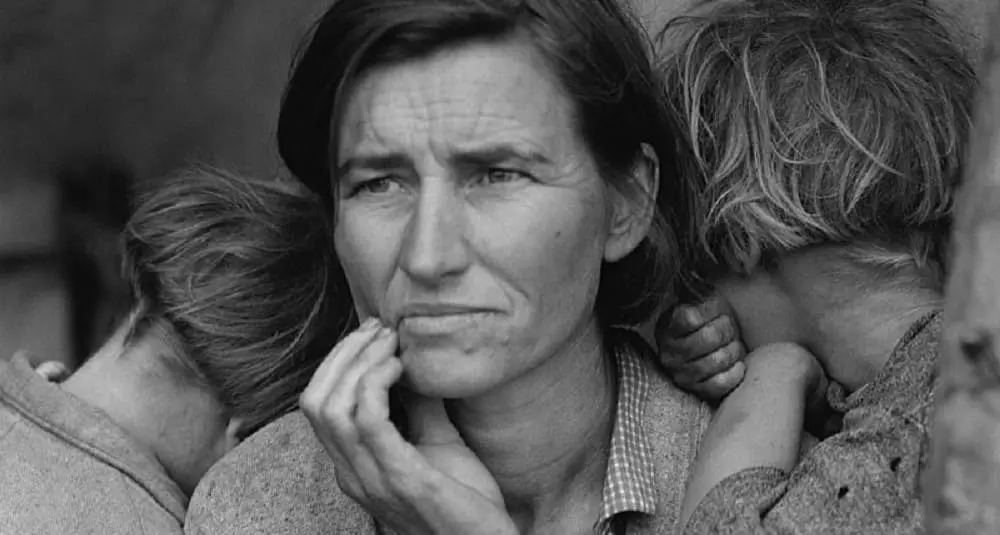Where was the Migrant Mother photo taken?
Last Updated:
Migrant Mother is an iconic photograph taken by American photographer Dorothea Lange in 1936, during the Great Depression. The image has become one of the most powerful symbols of this difficult period in American history. The photo was taken in Nipomo, California, where Lange was documenting the living conditions of migrant worker families on behalf of the Farm Security Administration (FSA).
The photo shows Florence Owens Thompson, a mother of seven, sitting with an expression of deep concern on her face, surrounded by her children. The family, like many others at the time, had been displaced by the economic crisis and the Dust Bowl, a series of devastating dust storms that ravaged farmland in the American Midwest. They lived in a migrant camp, in extremely precarious conditions.
The image had a huge impact, raising public awareness of the plight of migrant workers and prompting the government to provide emergency aid to affected communities. The photo became an icon of documentary photography and remains one of the most recognized images of the 20th century.
Dorothea Lange captured the essence of human despair and resilience through this image, making Migrant Mother a poignant testament to the hardships endured by Americans during the Great Depression. Today, this photograph is exhibited in museums and art collections around the world, reminding us of the importance of compassion and solidarity in times of crisis.
You may also be interested in
arts

Where was the Migrant Mother photo taken?
Answer
The famous Migrant Mother photo was taken in 1936 in Nipomo, California, by Dorothea Lange, during the Great Depression in the United States.